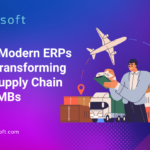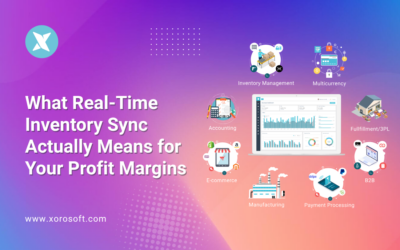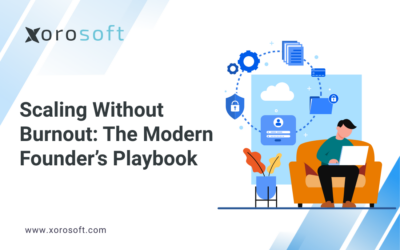
Growth Brings Revenue, but It Also Brings Chaos
Scaling should feel exciting, not overwhelming. Yet many brands discover the hard truth: growth doesn’t break because of sales, it breaks because of operations. And for companies managing multiple warehouses, choosing the right multi-warehouse ERP system becomes the difference between control and chaos.
When new wholesale orders come in, your Shopify store explodes with activity, and distribution channels multiply, the backend starts creaking. In the warehouses, mistakes multiply. Staff misplace inventory. Teams ship orders late. Customer service drowns in “where’s my order?” tickets.
For brands running multiple warehouses, what once felt manageable with one location and a spreadsheet quickly spirals into disorder.
Why Brands Without a Multi-Warehouse ERP System Struggle
Running a single warehouse already requires tight coordination. Add three, five, or even ten facilities, and the complexity jumps to a new level.
The most common challenges multi-warehouse brands face include:
-
Inventory blind spots: Teams never know in real time which warehouse has what stock.
-
Wrong-location fulfillment: Staff ship orders from the wrong facility, driving up costs.
-
Accounting delays: Finance teams chase outdated reports, wasting hours each week.
-
Disconnected tools: Shopify says one thing, spreadsheets show another, and QuickBooks shows something else entirely.
As a result, brands lose revenue, waste labor, and push loyal customers away.
The Hidden Causes Behind Warehouse Inefficiency
Why does this happen to fast-scaling companies? The culprit isn’t growth itself — it’s the way systems are stitched together.
Most brands scale by layering disconnected tools: QuickBooks for accounting, a shipping app for labels, spreadsheets for tracking inventory, and Shopify for online sales.
Although each tool solves one job, none of them communicate. This creates constant friction:
-
Data silos: Inventory updates lag across platforms, leaving teams in the dark.
-
No single source of truth: Staff argue over which numbers to trust.
-
Manual work everywhere: Teams spend late nights exporting, importing, and reconciling data.
-
Operational blind spots: Decisions happen on stale, incomplete information.
Therefore, the bigger you grow, the wider these cracks spread.
Why a Multi-Warehouse ERP System Changes the Game
Instead of duct-taping tools together, brands need a system designed for scale. A modern, unified multi-warehouse ERP system transforms warehouse operations because it:
-
Shows real-time inventory across all warehouses, eliminating blind spots.
-
Uses smart order routing so shipments always leave the closest facility.
-
Keeps accounting and reporting integrated, so finance teams finally see live data.
-
Automates manual tasks, cutting out errors and endless reconciliations.
In other words, the right ERP system becomes the single source of truth for every team.
Why XoroERP Is the Best Multi-Warehouse ERP System
XoroERP was built with these exact challenges in mind. Unlike legacy ERP systems that bolt on a warehouse module, XoroERP is cloud-native and fully integrated from the start.
Here’s why multi-warehouse brands choose it as their backbone:
-
Real-time visibility: Instantly see inventory across every warehouse, sales channel, and location.
-
Full WMS included: A robust warehouse management system comes built-in, not as an add-on. Pick, pack, and ship with confidence.
-
Automation that scales: Automate reorders, purchase orders, invoices, and order routing without extra apps.
-
Seamless integrations: Native connections to Shopify, Amazon, EDI, 3PLs, and hundreds more. (View the Shopify App)
-
Global capabilities: Handle multiple currencies, tax structures, and warehouses across regions with ease.
-
Ease of use: Ranked #1 in Ease of Use on G2, so adoption is painless.
Because everything is centralized, brands stop wasting hours chasing spreadsheets and start scaling with clarity.
Smarter Warehouse Management in Real Life
Imagine a fashion brand running warehouses in Los Angeles, Toronto, and London. An order comes in from a Shopify customer in Paris. Instead of someone manually choosing a shipping location, XoroERP automatically routes the order to London.
As a result, delivery costs drop, the shipment arrives faster, and customer satisfaction rises. Finance teams see the transaction instantly in real time. Inventory counts update across all warehouses the moment the item is picked.
That’s the power of a unified multi-warehouse ERP system designed for modern brands.
The Future of Multi-Warehouse Operations Starts Here
The most successful brands today don’t just sell more — they operate smarter. They know that growth doesn’t have to feel chaotic when the right system runs their warehouses.
With XoroERP, multi-warehouse brands finally gain clarity, control, and confidence. Whether you manage two warehouses or twenty, the system adapts as you expand.
👉 Ready to see it live? Book a demo today and discover why fast-scaling brands trust XoroERP as their foundation for growth.









